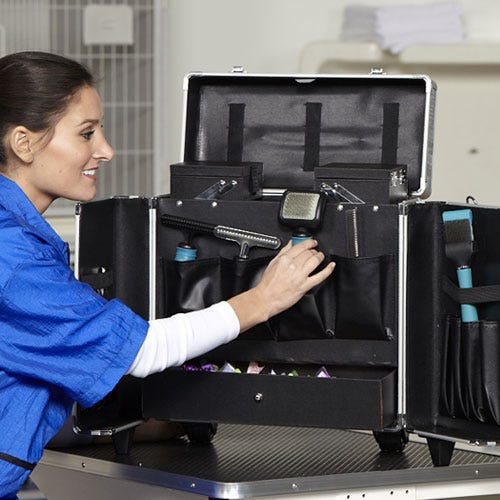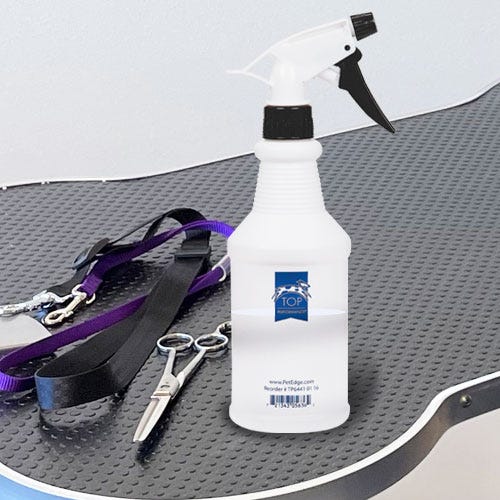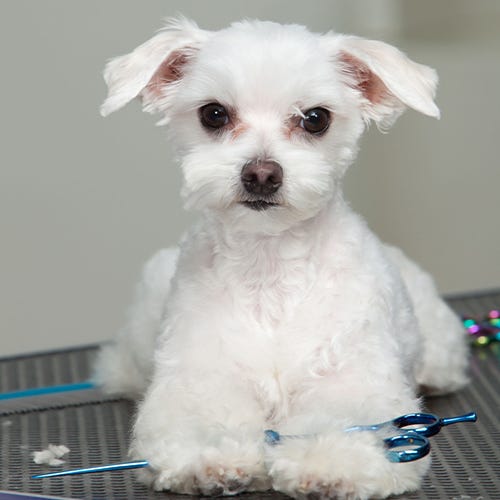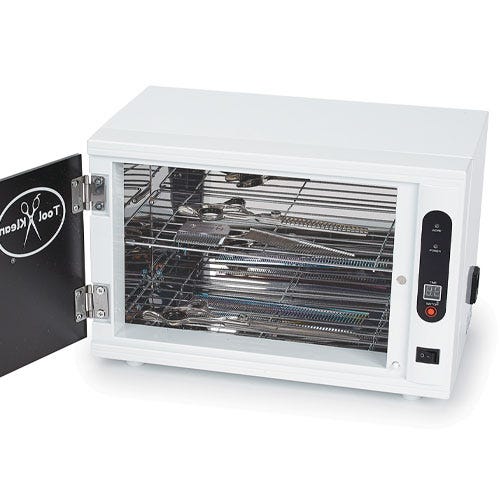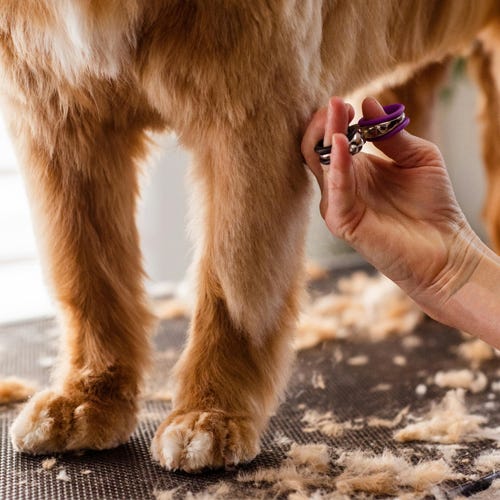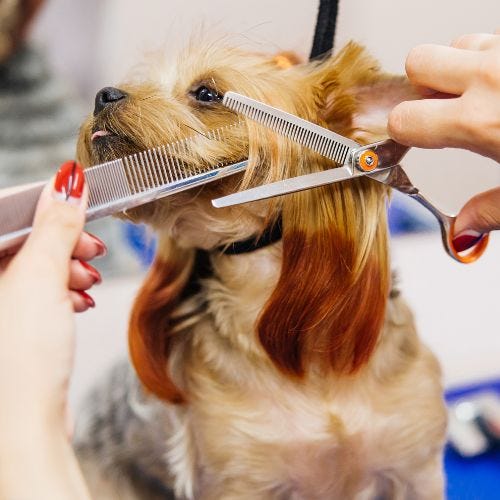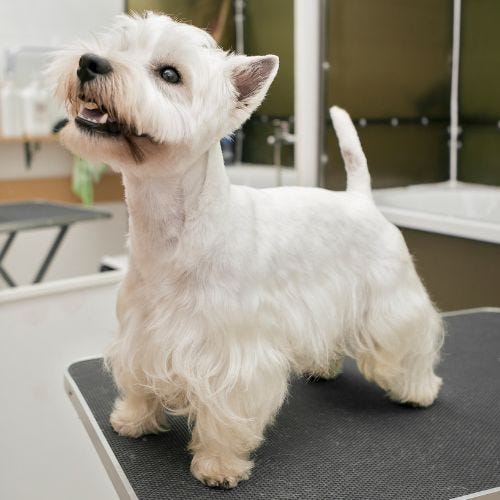As a new groomer, I had one favorite type of slicker brush. I used it on everything from tiny toy breeds to giant hairy breeds. It worked just fine, but with time and experience, I realized there were other options that might make my job easier. As tools go, slicker brushes are not expensive, so purchasing a variety of styles can be done without breaking the bank.
For a quick refresher, slicker brushes work best when groomers hold them without flexing their wrist and by implementing a “pat and pull” movement. Pat the brush into the fur, then pull it as you stroke. This will reduce brush irritation.
You might choose a medium-sized model with a curved back for a day-to-day workhorse brush. The contoured back helps the teeth of the brush penetrate the coat more deeply, reaching thick spots and tangles near the skin and reducing the number of times the groomer needs to go over the same area. Medium-sized brushes can be easily used on all but the tiniest toy breeds and can also work on large breeds. So why try other types and sizes? Variations in size and style can offer worthwhile advantages.
Size - Investing in a very small slicker can make grooming toy breeds easier. The smaller size of the brush head allows you easier access to tiny bodies and legs. Alternatively, brushes with large heads will allow you to cover more territory with every brush stroke, saving time and effort on medium to giant breeds.
Curved or Flat - Does your preference lean more towards curved back brushes or flat-backed backed? I like curved for most dogs, but I find myself reaching for a flat-backed slicker on some very thick-coated dogs. It seems to work better on thick Poodle or Doodle coats and on the heavy coats on the ruff and pantaloons on breeds such as Samoyeds. I can’t explain why, but I am glad to have options to choose which works best on each coat.
Shape of Head - Did you know some slicker brushes come with circular or even triangular heads? Those little triangle tips make getting into tricky areas (think armpits and faces!) so much easier.
Length of Teeth - Depending on the brand and style of brush you choose, some have shorter teeth, and others boast longer teeth. It is easy to see that shorter teeth work best on dogs with shorter fur, while longer teeth can make brushing out long or dense coats much easier!
Flexible Heads - Many groomers favor slicker brushes with flexible heads. They can be gentler on the skin while still offering excellent dematting ability. https://www.petedge.com/mg-slicker-brushes-flexible
Firmness of Teeth - While firm teeth are best for dematting, softer teeth can be great for dogs in good condition and on puppies and old dogs or dogs with thin, fine coats.
Keeping a variety of shapes, styles, and sizes of slicker brushes on hand can help you be prepared for all the different dogs that grace your grooming table.


